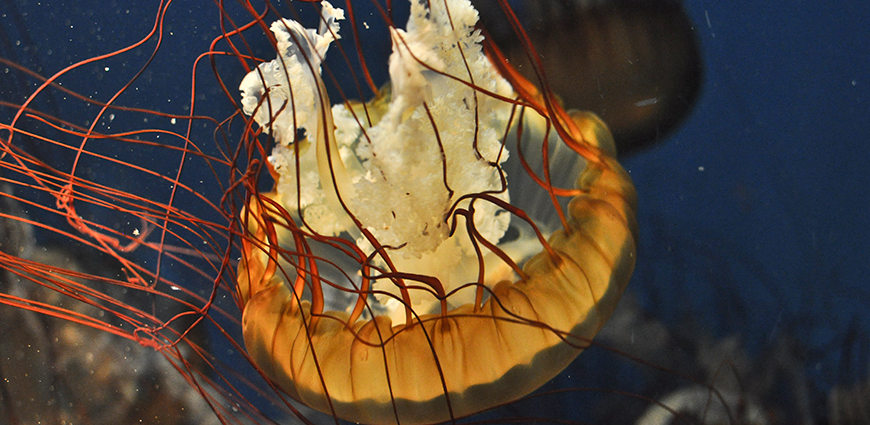Global S&T Development Trend Analysis Platform of Resources and Environment
| Voyager: How are jellyfish connected to climate change? | |
| admin | |
| 2019-10-29 | |
| 发布年 | 2019 |
| 语种 | 英语 |
| 国家 | 美国 |
| 领域 | 资源环境 |
| 正文(英文) |  Photo: Marc Adams Good question! As climate change continues to affect the ocean, the number of jellyfish is expected to increase in some regions and decrease in others. Warmer waters often favor jellyfish growth, but only if they have enough food. So a warmer ocean will lead to more jellyfish if their food (other types of plankton such as krill larvae, copepods, or fish eggs) also becomes more abundant at the same time, but fewer jellyfish if their favorite food decreases as the ocean warms. Another important effect of climate change is a decrease in oxygen levels, which have already been occurring in many parts of the ocean. These declines in oxygen are expected to increase in the future. Jellyfish need oxygen to survive, just as we do, but scientists have found that some types of jellyfish are tolerant of very low-oxygen conditions. In fact, these jellyfish can tolerate low oxygen better than most other types of plankton, so the jellyfish are sometimes the only surviving ocean animal as oxygen is used up. This means that lower oxygen in ocean waters can lead to a dominance of jellyfish over other types of plankton. Rainfall is another factor that can favor jellyfish growth in the future. Some jellyfish grow and survive better when the ocean is at or above its normal level of saltiness (or salinity), so drier conditions can lead to many jellyfish. But heavier rain makes seawater less salty. So in some regions, it can lead to low salinity in coastal waters and decreased jellyfish outbreaks. When levels of carbon dioxide increase in the atmosphere then more carbon dioxide enters the ocean. Some of that carbon gets converted to an acid, which makes seawater more acidic. The process is called ocean acidification. It’s not yet clear how it will impact jellyfish. Many kinds of jellyfish live only part of their lives drifting in the water. Many jellyfish that live close to the coast (in bays or harbors) have a second part of their life cycle that is attached to hard surfaces like rocks, pier pilings, and boat docks. These are called polyps and they don’t move at all. When conditions are right, the polyps grow bigger and release tiny, juvenile jellyfish that drift away. Sometimes changes that occur in the ocean are harmless to the attached polyps, but harmful to the young jellyfish. Also, increased coastal construction of harbors and marinas which provide more surfaces for the polyps to attach can lead to rapid population growth – more polyps often lead to more jellyfish in a short time.
– Mark Ohman is a biological oceanographer and curator of the Pelagic Invertebrate Collection at Scripps Institution of Oceanography at UC San Diego.
This story appears in explorations now, Scripps Institution of Oceanography's award-winning ocean and earth science magazine. Sign up to receive our free monthly story roundup.
|
| URL | 查看原文 |
| 来源平台 | Scripps Institution of Oceanography |
| 文献类型 | 新闻 |
| 条目标识符 | http://119.78.100.173/C666/handle/2XK7JSWQ/216605 |
| 专题 | 资源环境科学 |
| 推荐引用方式 GB/T 7714 | admin. Voyager: How are jellyfish connected to climate change?. 2019. |
| 条目包含的文件 | 条目无相关文件。 | |||||
| 个性服务 |
| 推荐该条目 |
| 保存到收藏夹 |
| 查看访问统计 |
| 导出为Endnote文件 |
| 谷歌学术 |
| 谷歌学术中相似的文章 |
| [admin]的文章 |
| 百度学术 |
| 百度学术中相似的文章 |
| [admin]的文章 |
| 必应学术 |
| 必应学术中相似的文章 |
| [admin]的文章 |
| 相关权益政策 |
| 暂无数据 |
| 收藏/分享 |
除非特别说明,本系统中所有内容都受版权保护,并保留所有权利。
修改评论